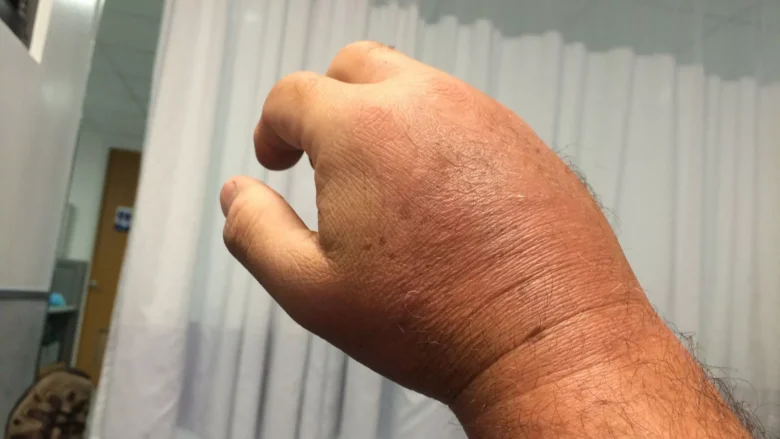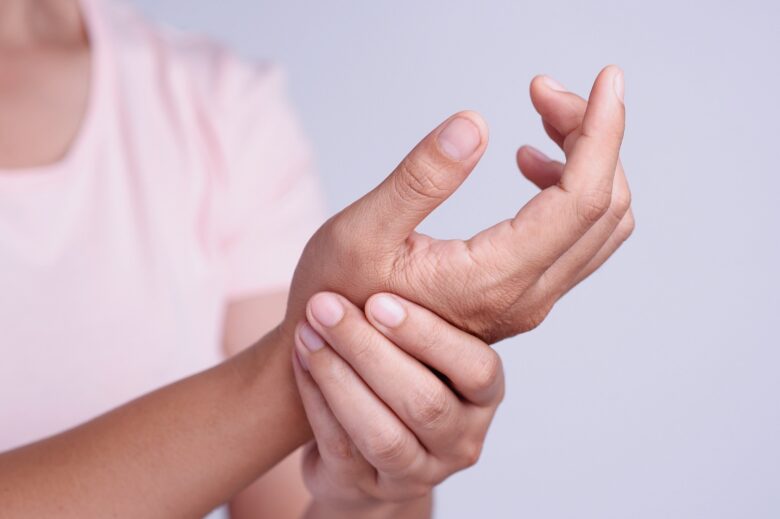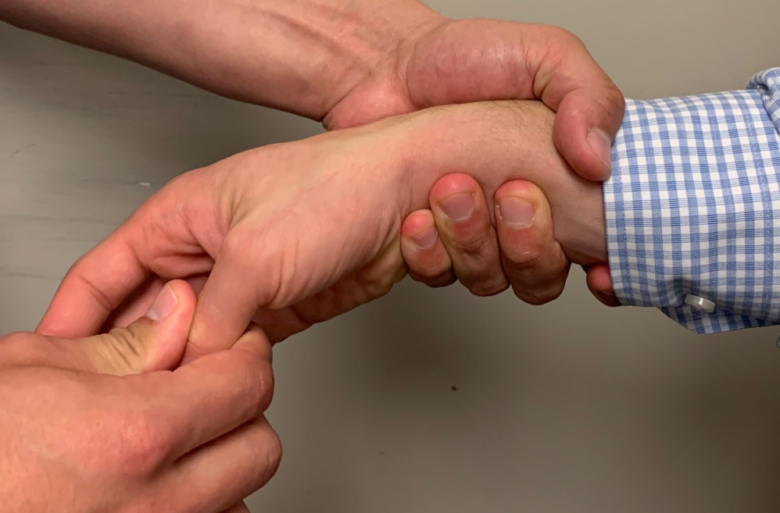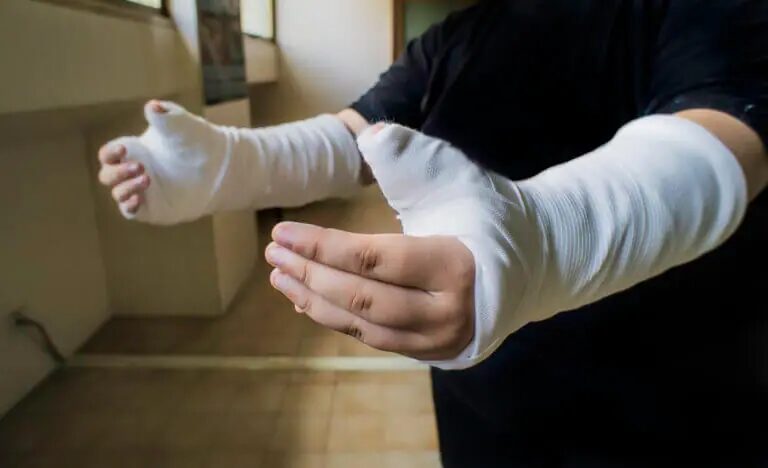The hands are the most magical parts of the human body, without a doubt. From working and texting to rigorous sports and even using the loo, they are in constant use. It is no wonder that our tough routines can make them sore or even get them injured.
Since our hands are a complexly delicate work of nature, it may not be easy to identify the cause of pain. Bones, tendons, and blood vessels running within mean that the source of the pain can potentially be anywhere.
Read on to learn the most probable causes of hand pain and possible treatments for the same.
Contents
Causes of Severe Hand Pain and Treatment
1. Complex Regional Pain Syndrome

Source: propelphysiotherapy.com
Complex Regional Pain Syndrome is a chronic condition causing intense pain, discoloration, stiffness, and even swelling in certain extremities of your body. Most often occurring in the hands, it can occur in other parts of the body, such as arms, legs, and feet.
The Spero Clinic CRPS Treatment Center reports that women are 75% more likely to suffer from CRPS than men. This condition results from malfunction and imbalance in the autonomic nervous system, leading to chronic pain, functional loss, disability, or even impairment.
Treatments:
Healthcare providers usually employ pain medications, physical therapy, or lifestyle changes for pain management. Some clinics are also striving to heal CRPS from the inside out by uncovering abnormalities in the Central Nervous System and restoring balance.
2. Arthritis

Source: meduniwien.ac.at
The Global RA Network reports that arthritis is a global health problem impacting more than 350 million people worldwide. In arthritis, the joints in your body may swell or become tender. These joints begin to lose the cartilage that allows them to move smoothly against one another.
If you feel a burning sensation or a dull pain in the joints of your hands, it may be the start of arthritis. A common form of arthritis in the hands is osteoarthritis. Osteoarthritis may occur after an injury or even from normal daily use.
Treatments:
Several treatment options are available for arthritis, depending on the disability and severity of the pain. Heat and physical therapy may be recommended. Or, your doctor may advise you to use splints, a supportive device for protecting broken bones. Painkillers may also be used.
If all fails to provide relief, surgery may be recommended.
3. De Quervain’s Tenosynovitis

Source: now.aapmr.org
De Quervain’s tenosynovitis is a painful condition where the thick fibrous cords that attach your muscle to bone become inflamed. These fibrous cords called tendons in the thumb become swollen, causing pressure on nearby nerves and causing pain.
Repetitive hand movements and chronically overusing your wrist may cause the development of tenosynovitis. Lifting a child and holding groceries are some daily tasks that can trigger this problem. This disease causes a dull ace and less strength in the hands. As a result, you may also feel trouble grasping objects or even making a fist.
Treatments:
A simple Finkelstein test is done physically on your hands to diagnose this condition. Treatment includes taking non-steroidal anti-inflammatory drugs, applying heat or ice to the impact area, and avoiding repetitive hand motion. You can also wear a splint or get steroid injections.
See a physical therapist to change hand movements and learn exercises for muscle strength.
4. Carpal Tunnel Syndrome

Source: medlineplus.gov
Carpal Tunnel Syndrome is a hand condition caused by pressure on the median nerve in your wrist. There is a narrow passageway on the palm side of your hand called the carpal tunnel through which the median nerve passes.
This nerve is responsible for controlling sensation and muscle impulses in some fingers and the thumb. When pinched or inflamed, it leads to tingling, numbness, and even weakness in the hands and arms. Manual labor jobs that require repetitive motion, data entry, or desk typing, health problems, and wrist anatomy can cause this syndrome.
Treatments:
Treatments for Carpal Tunnel Syndrome include wearing a wrist splint and cutting down on repetitive motion. Your health practitioner may also suggest certain hand exercises and even physical therapy. If these solutions don’t help, your General Physician may recommend steroidal injections. Surgery may be used as a last resort.
5. Trigger Finger

Source: onehealthcare.co.uk
Trigger finger, or stenosing tenosynovitis, is a condition where the tendons in your finger get inflamed. As a result, your finger may lock and get stuck in a bent position. Bending or straightening your finger or thumb can be very painful in this condition.
Even though the exact cause of a trigger finger cannot be established, it is more likely for someone to get this condition if they have gout, diabetes, or even rheumatoid arthritis. Similar to Carpal Tunnel Syndrome, women are more likely to get this condition than men.
Treatments:
Treatments include resting and wearing a splint. Over-the-counter medication may also help to fix the problem. In other instances, your doctor may inject liquid corticosteroid in the affected finger or thumb at the base for symptom relief. As a last resort, surgery may be opted for.
6. Fractures or Other Injuries

Source: movementortho.com
You may experience severe pain or swelling when you have a hand injury, such as a fracture. In a fracture, the bones in your hand may break. These may be the small bone fingers called the phalanges or the long palm bones called the metacarpals.
Fractures and hand injuries are usually caused by falls, twists, crushes, or through involvement in rigorous activities such as sports. Dislocations and sprains can also result from these events causing pain and swelling. People suffering from osteoarthritis are at a higher risk of breaking their hands due to bone thinning and fragility.
Treatments:
In the case of such hand injuries, you can wear a splint or even a cast. Buddy straps may also be used for some period of time. In case of a serious fracture, your doctor may recommend surgery. Surgery will help realign the broken pieces and help keep them in place until they are completely healed.
These are some of the many causes of severe hand pain. It’s recommended to see a doctor before opting for any treatment option so that they may help you identify the root cause and prescribe treatment accordingly.
